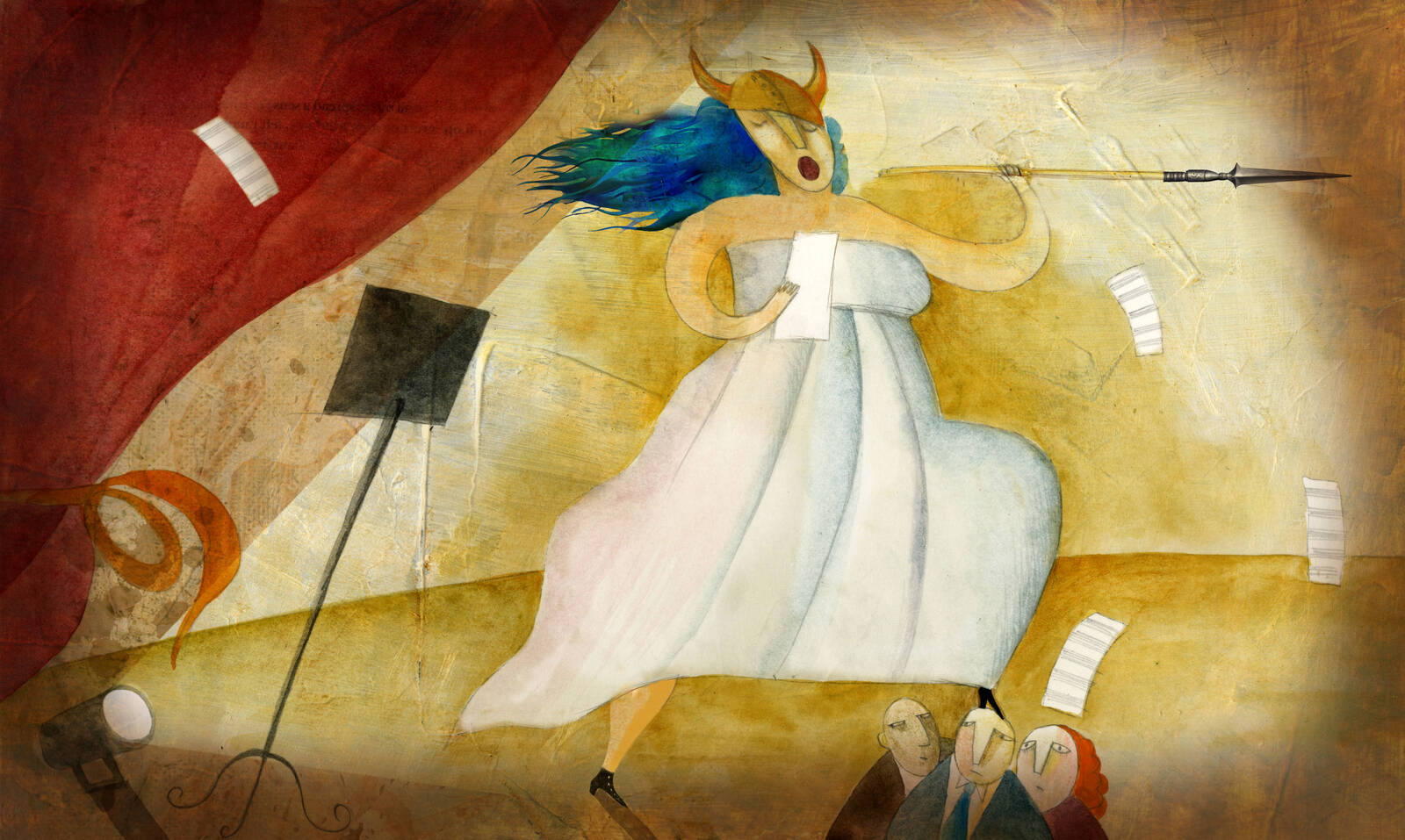But creativity can be difficult to nurture—and sometimes difficult to tame.
Kellogg School faculty have researched the intricacies of creativity, from how it functions in teams to how persistence enhances creative success. Their research demonstrates how creating the right conditions is key in fostering innovative ideas.
Want an Office Diva? Treat Them Like One.
The stories are legendary: enfants terribles whose reputation for creativity is only matched by their crummy behavior toward those around them, be it a rock star trashing hotel rooms, or Enron executives pulling off a massive fraud.
So how can such bad behavior among creative types be curbed?
Research shows that putting creative employees on a pedestal increases the likelihood that they will do something questionable.
“If you feel you deserve more than other people, when you are in a tempting situation, that feeling frees you to engage in more self-interested behavior,” says Maryam Kouchaki, an assistant professor of management and organizations.
Kouchaki’s research shows that when people are told they are creative but that creativity is common, there are no adverse effects on behavior. But when they are told that they are uniquely creative, bad behavior ensues.
Kouchaki therefore advises companies to send the message that creativity is the provenance of all employees, not a select few.
“You want to encourage a culture of creativity,” she says, “rather than a special treatment of creative people.”
Adding Structure Can Open the Door to Creative Teams
It may be tempting for leaders to simply set their best people loose on a problem and give them the autonomy to come up with the most creative solutions possible. It’s the “our rule is we have no rules” theory.
But it’s more complicated than that. Leigh Thompson, a professor of management and organizations, explains that creative teams will function better if they take the time to first come up with an explicit written charter that lays out their ground rules—ideally in one sentence.
This can eliminate the downfall of many creative teams, where everyone waits for someone else to take action.
“Teams that develop a charter end up being more nimble, having more proactive behavior, and achieving their goals more than teams that don’t bother,” says Thompson.
When to Standardize and When to Innovate
Most chain restaurants have a reputation for sameness—you walk in with an idea of how the breadsticks will taste, or what the wait staff will be wearing.
But one chain has deliberately forged a reputation for culinary creativity. Lettuce Entertain You Enterprises’ success is built on knowing what aspects of their operations to centralize and what to leave in the creative hands of each restaurant’s leadership teams.
This means that elements such as human resources are centralized, while the design and menu at each restaurant are unique. It also means the chain has not built a centralized supply chain, instead opting for customization.
“The leadership gives a lot of autonomy to the individual restaurants,” says William Ocasio, a professor of management and organizations. “So while customers may not recognize the umbrella organization, employees certainly think of themselves as working for Lettuce Entertain You.”
This has led to loyalty among individual chefs and managers, who are less likely to strike out on their own since they enjoy many of the advantages of the chain while being able to put their stamp on the restaurants they run.
“With that organizational architecture in place,” Ocasio says, “they are free to experiment.”
Wizards and Workhorses
Much has been made about the advantages of assembling teams with diverse skills and knowledge that can creatively recombine their strengths in advantageous ways.
But it turns out that teams with diverse skillsets are often not as successful as their homogeneous counterparts. For diversity to help teams gel, rather than fragment, there has to be a balance between diversity and similarity.
“Too much diversity can undermine itself, but too little diversity and you’re not likely to get any unique viewpoints,” says Ned Smith, a professor of management and organizations. “There’s no novelty.”
Using more than 20 years of data from the National Basketball Association, Smith and a coauthor studied how designing a team around “redundant heterogeneity” can draw people with unique skill sets into a cohesive whole.
Teams benefit from matching their core players with secondary players who have a similar style of play (as determined by their college conference), while at the same time maintaining a diversity of style among both the core players and among the secondary team. This is what the researchers dubbed “redundant heterogeneity.”
So, if you are a general manager, you may want to sign a starting power forward and his backup from the Big Ten conference, while your starting lineup may consist of players from the Big 12, Atlantic 10, PAC 10, and the ACC.
“We think when teams have redundant personnel, it allows people to remember and preserve their uniqueness,” Smith says. “And oftentimes the best ideas, the most innovative solutions, come from the recombination of unique bits of knowledge, which we can only get from people with diverse experiences and backgrounds.”
If at First You Don’t Create …
In the best of circumstances, being creative can feel exhilarating.
Yet it can also feel exhausting. When is it okay to simply throw up your hands and say you are out of good ideas?
Probably later than you think, according to research from Loran Nordgren, a professor of management and organizations.
“People just give up too easily,” says Nordgren. “They’re robbing themselves of their more interesting ideas by giving up too soon.”
Nordgren and a coauthor conducted experiments to determine what happens when people persist in creative tasks, such as brainstorming new ideas. They found that people often underestimate how many new ideas they will generate if they keep at it.
Part of the reason we give up is that creativity is not linear.
Think of it this way: After spending five minutes doing long division, you probably have a good idea of how many more problems you could solve if given an extra five minutes. But it is much harder to predict your trajectory of achievement on a creative task, which makes the benefits of persevering less clear.
Nordgren suggests stifling the inner voice telling us to throw in the towel.
“That feeling that you’ve kind of run out of ideas is inaccurate and, in a sense, shouldn’t be listened to,” he says. “There’s good reason to believe that there are better solutions out there.”




